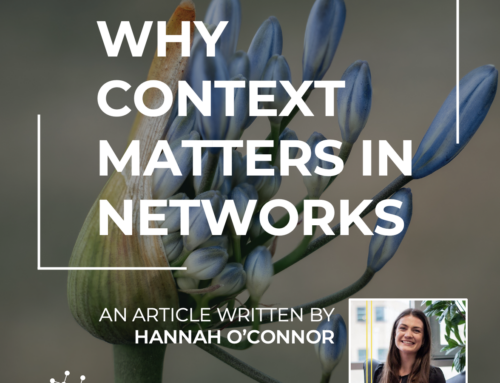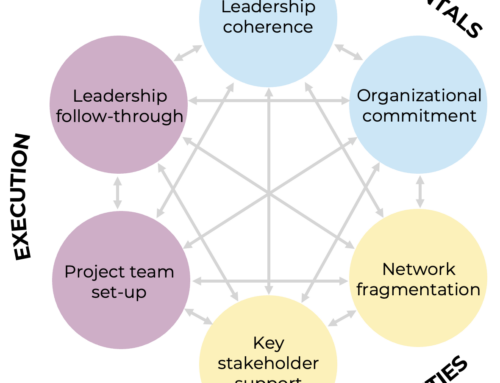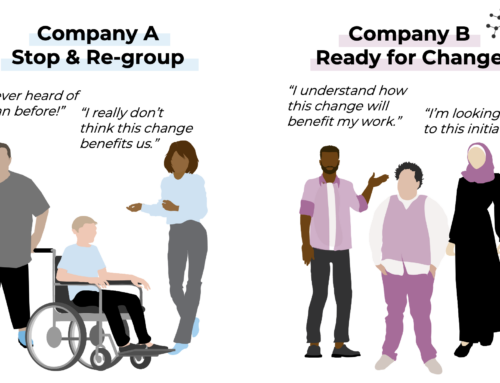INFORMAL NETWORKS
The Real Power of Informal Networks Must Go Beyond The Visuals
December 26th, 2023 | Informal networks
Every single day for the past 8 years, I have been working on it. And it still gives me a thrill.
With it I refer to witnessing the impact that informal networks have inside organizations. That gives me a thrill! I also get a thrill knowing that so many companies and organizations still have not harvested the potential inside their informal networks.
So, networks have a very special place in my heart. But why do I then write articles like these:
- Network visualization can amplify the risks of organizational blind spots
- Do-It-Yourself Organizational Network Analysis Destroys The Practice
- Visualizations: Don’t Get Fooled Too Quickly
Network visualizations are too often the only output that is being taken seriously. As a result, many have created their core solution and even their whole company around network visualizations.
I must admit that visualizations can be visually appealing and serve as conversation starters as they reach the heart right away. Convincing the heart is however like scratching the surface. To truly harvest the potential inside your informal networks, you must convince the mind. This requires digging deeper to understand the most impactful interventions necessary for the success of your organizational initiative.
Let’s give an example ⬇️
Some of the things you don’t see in this 400+ people organization?

Commitment inside informal networks
80% of the people feel the need to change the way they work, but many struggle to pinpoint priorities. This sentiment is shared by 43% of their employees and 38% of leaders.
The leader network
The leader network with 66 leaders lacks cohesion, hindering effective collaboration. Not only are they 32% less effective compared to similar-sized leadership teams from the Innovisor Benchmark. The group also demonstrates fragility. Risk assessments show that the departure of a single leader could cause the network to disintegrate into smaller, disconnected fragments. This lack of unity is also reflected in the leader group’s unawareness of the organization’s future direction.
Key stakeholder support
The #ThreePercentRule algorithm identifies a crucial 3% (13 employees) shaping the perception of 88% of the organization. Alarmingly, nearly 60% of this vital stakeholder group feels uninformed about the organization’s future.
Go Beyond Visualizations with the #SixChangeBlockers
These highlighted insights are just a glimpse into the #SixChangeBlockers – the six blockers you must combat to win your change. It helps you to identify who to engage with, and on what.
So, next time you find yourself captivated by a (beautiful) visualization of an informal network—whether embedded in your in-house technology dashboard or presented in a management consultant’s report—ask yourself:
“What does it help me with?”
Beyond the aesthetic appeal, the true value lies in understanding how these visualizations contribute to identifying and addressing critical challenges within informal networks through change analytics.
INFORMAL NETWORKS
The Real Power of Informal Networks Must Go Beyond The Visuals
December 26th, 2023 | Informal networks
Every single day for the past 8 years, I have been working on it. And it still gives me a thrill.
With it I refer to witnessing the impact that informal networks have inside organizations. That gives me a thrill! I also get a thrill knowing that so many companies and organizations still have not harvested the potential inside their informal networks.
So, networks have a very special place in my heart. But why do I then write articles like these:
- Network visualization can amplify the risks of organizational blind spots
- Do-It-Yourself Organizational Network Analysis Destroys The Practice
- Visualizations: Don’t Get Fooled Too Quickly
Network visualizations are too often the only output that is being taken seriously. As a result, many have created their core solution and even their whole company around network visualizations.
I must admit that visualizations can be visually appealing and serve as conversation starters as they reach the heart right away. Convincing the heart is however like scratching the surface. To truly harvest the potential inside your informal networks, you must convince the mind. This requires digging deeper to understand the most impactful interventions necessary for the success of your organizational initiative.
Let’s give an example ⬇️
Some of the things you don’t see in this 400+ people organization?

Commitment inside informal networks
80% of the people feel the need to change the way they work, but many struggle to pinpoint priorities. This sentiment is shared by 43% of their employees and 38% of leaders.
The leader network
The leader network with 66 leaders lacks cohesion, hindering effective collaboration. Not only are they 32% less effective compared to similar-sized leadership teams from the Innovisor Benchmark. The group also demonstrates fragility. Risk assessments show that the departure of a single leader could cause the network to disintegrate into smaller, disconnected fragments. This lack of unity is also reflected in the leader group’s unawareness of the organization’s future direction.
Key stakeholder support
The #ThreePercentRule algorithm identifies a crucial 3% (13 employees) shaping the perception of 88% of the organization. Alarmingly, nearly 60% of this vital stakeholder group feels uninformed about the organization’s future.
Go Beyond Visualizations with the #SixChangeBlockers
These highlighted insights are just a glimpse into the #SixChangeBlockers – the six blockers you must combat to win your change. It helps you to identify who to engage with, and on what.
So, next time you find yourself captivated by a (beautiful) visualization of an informal network—whether embedded in your in-house technology dashboard or presented in a management consultant’s report—ask yourself:
“What does it help me with?”
Beyond the aesthetic appeal, the true value lies in understanding how these visualizations contribute to identifying and addressing critical challenges within informal networks through change analytics.
Related articles
Share article
Share article









